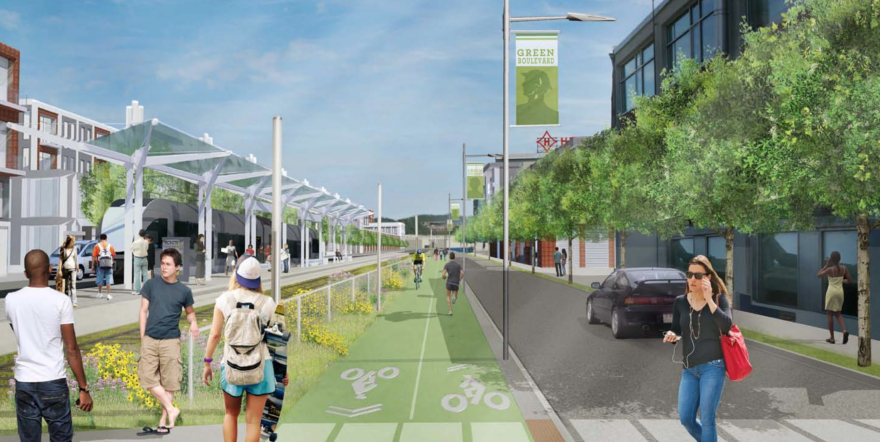A lot can change in five years.
In March of 2013, the city, working with private partners and the public, completed a $1.5 million, federally-funded plan to rejuvenate the neighborhoods along a 6-mile stretch of the Allegheny River, from Downtown through Highland Park.
The Allegheny Riverfront Green Boulevard plan mapped out affordable housing, stormwater management and riverfront zoning efforts and, the pièce de résistance, a multi-use trail built parallel to a light rail line.
“As the Green Boulevard moves toward implementation, sustained support from the project partners and the community will be critical to its ultimate success,” the plan reads.
But the plan has not moved forward the way it was designed: comprehensively. That can happen with large collaborations, said Kryn Sausedo of the Urban Redevelopment Authority, one of the agencies that worked on the Green Boulevard effort.
“When you put these plans into motion, it really takes individual actors to take them on, to take ownership of them,” he said, noting that Pittsburgh Water and Sewer Authority has moved forward with its Green First stormwater management, and that the new riverfront zoning passed by council last week can trace its roots to the Green Boulevard plan.
But some of the best-remembered elements of the project, including commuter rail and the multi-use path, hinged on private property owners.
“For me, the biggest lesson coming out of the Green Boulevard plan was site control,” said Sausedo. “If you don’t have site control it’s incredibly hard to move a project forward, and it doesn’t make a lot of sense to spend more money designing something [when] you don’t own the land.”
The proposed path would run through parcels owned by different people and companies, which would require negotiations to ensure legal passage by cyclists and pedestrians. Matthew Galluzzo of the Lawrenceville Corporation said property owners from 39th to 43rd streets have already pledged pieces of land to do so. What’s missing is someone to lead the charge, he said.
“Who secures the easements or purchases those aprons [of land] from those property owners? Who indemnifies those property owners? Who conducts the design and engineering phases ... and care and maintenance?” he said. “[The Green Boulevard] needs to re-emerge as an issue of regional prioritization.”
Eric Boerer of cyclist and pedestrian advocacy group Bike Pittsburgh echoed that sentiment, and said there must be a safe bike connection between downtown and the eastern neighborhoods along the river. Currently, the Penn Avenue bike lane ends at 16th Street and dead ends into oncoming traffic.
“The Penn Avenue bike lane was put in four years ago with the understanding that it’s just ‘an on-ramp’ until it’s connected to the neighborhoods.”
The issue of bike ped facilities has grown more pressing—new offices and housing have increased the populations of the Strip District and Lawrenceville. With the latter, the southern bank of the Allegheny River contains one of the city’s highest concentrations of cyclists.
“There are a lot of options to [make the connection], and the Green Boulevard was a really great option,” said Boerer. “It’s a shame that it’s sort of dropped.”
A plan to reconfigure Smallman Street does not include bike facilities. A segment of Railroad Street, one block north of Smallman, opened last week and could offer an alternative to riding in car traffic.
Riverfront development is challenging, said Stephan Bontrager of nonprofit organization, Riverlife.
“You have this mix of railroads and streets, and deteriorating riverbanks and squeezed, tight spaces along the riverfronts,” he said, adding that the Green Boulevard plan, though perhaps being implemented piecemail, remains a guiding force. “You can still go back to that document and say, ‘That’s what the community wanted.’”




